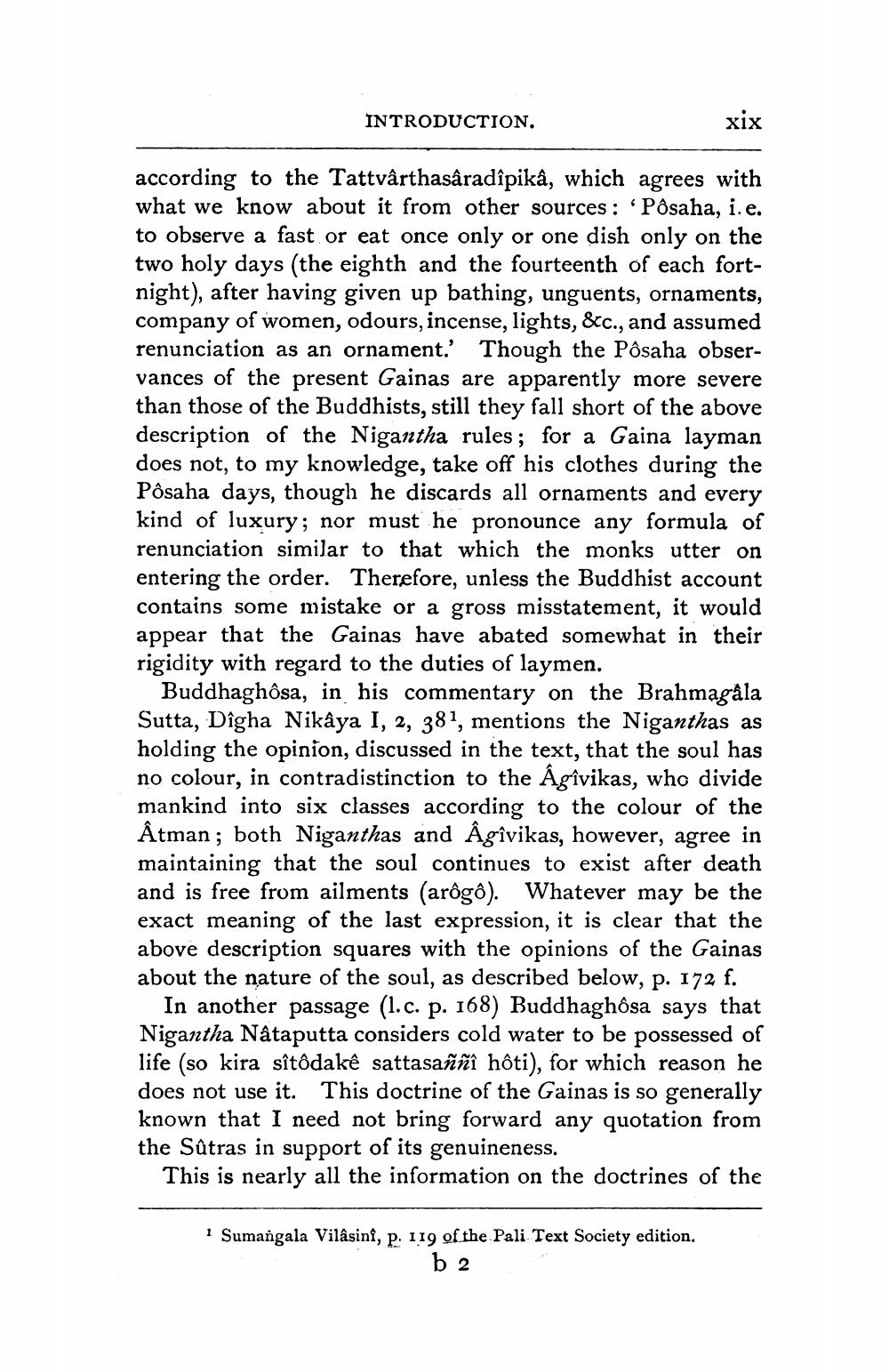________________
INTRODUCTION.
xix
according to the Tattvârthasâradîpikâ, which agrees with what we know about it from other sources: Pôsaha, i. e. to observe a fast or eat once only or one dish only on the two holy days (the eighth and the fourteenth of each fortnight), after having given up bathing, unguents, ornaments, company of women, odours, incense, lights, &c., and assumed renunciation as an ornament.' Though the Pôsaha observances of the present Gainas are apparently more severe than those of the Buddhists, still they fall short of the above description of the Nigantha rules; for a Gaina layman does not, to my knowledge, take off his clothes during the Pôsaha days, though he discards all ornaments and every kind of luxury; nor must he pronounce any formula of renunciation similar to that which the monks utter on entering the order. Therefore, unless the Buddhist account contains some mistake or a gross misstatement, it would appear that the Gainas have abated somewhat in their rigidity with regard to the duties of laymen.
Buddhaghôsa, in his commentary on the Brahmagala Sutta, Digha Nikâya I, 2, 381, mentions the Niganthas as holding the opinion, discussed in the text, that the soul has no colour, in contradistinction to the Âgîvikas, who divide mankind into six classes according to the colour of the Âtman; both Niganthas and Âgîvikas, however, agree in maintaining that the soul continues to exist after death and is free from ailments (arôgô). Whatever may be the exact meaning of the last expression, it is clear that the above description squares with the opinions of the Gainas about the nature of the soul, as described below, p. 172 f.
In another passage (1.c. p. 168) Buddhaghôsa says that Nigantha Nâtaputta considers cold water to be possessed of life (so kira sîtôdakê sattasaññî hôti), for which reason he does not use it. This doctrine of the Gainas is so generally known that I need not bring forward any quotation from the Sûtras in support of its genuineness.
This is nearly all the information on the doctrines of the
1 Sumangala Vilâsinf, p. 119 of the Pali Text Society edition.
b 2




